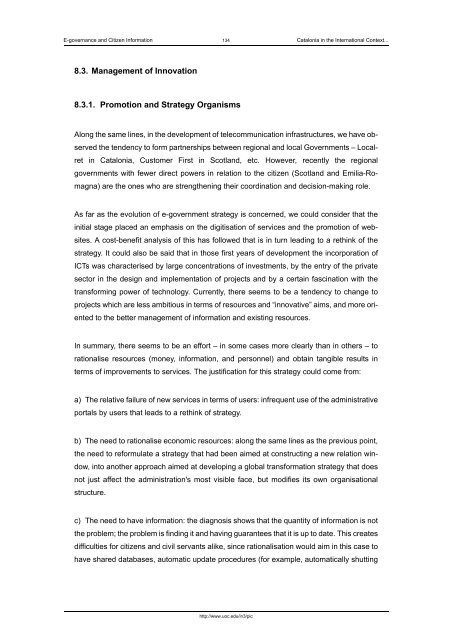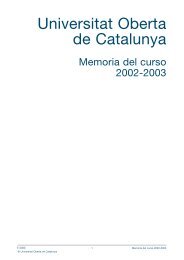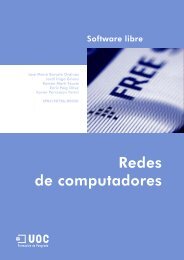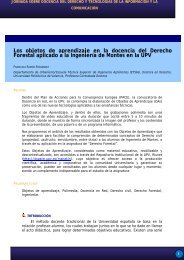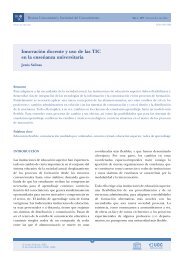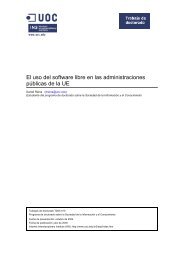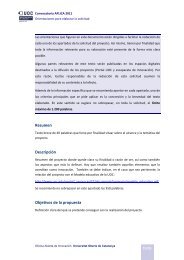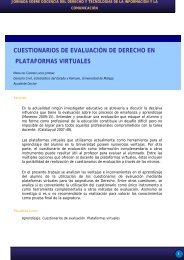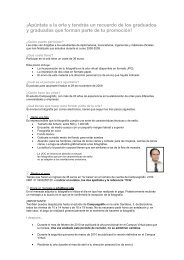e-governance and citizen information - Universitat Oberta de ...
e-governance and citizen information - Universitat Oberta de ...
e-governance and citizen information - Universitat Oberta de ...
Create successful ePaper yourself
Turn your PDF publications into a flip-book with our unique Google optimized e-Paper software.
E-<strong>governance</strong> <strong>and</strong> Citizen Information 134 Catalonia in the International Context...8.3. Management of Innovation8.3.1. Promotion <strong>and</strong> Strategy OrganismsAlong the same lines, in the <strong>de</strong>velopment of telecommunication infrastructures, we have observedthe ten<strong>de</strong>ncy to form partnerships between regional <strong>and</strong> local Governments – Localretin Catalonia, Customer First in Scotl<strong>and</strong>, etc. However, recently the regionalgovernments with fewer direct powers in relation to the <strong>citizen</strong> (Scotl<strong>and</strong> <strong>and</strong> Emilia-Romagna)are the ones who are strengthening their coordination <strong>and</strong> <strong>de</strong>cision-making role.As far as the evolution of e-government strategy is concerned, we could consi<strong>de</strong>r that theinitial stage placed an emphasis on the digitisation of services <strong>and</strong> the promotion of websites.A cost-benefit analysis of this has followed that is in turn leading to a rethink of thestrategy. It could also be said that in those first years of <strong>de</strong>velopment the incorporation ofICTs was characterised by large concentrations of investments, by the entry of the privatesector in the <strong>de</strong>sign <strong>and</strong> implementation of projects <strong>and</strong> by a certain fascination with thetransforming power of technology. Currently, there seems to be a ten<strong>de</strong>ncy to change toprojects which are less ambitious in terms of resources <strong>and</strong> “innovative” aims, <strong>and</strong> more orientedto the better management of <strong>information</strong> <strong>and</strong> existing resources.In summary, there seems to be an effort – in some cases more clearly than in others – torationalise resources (money, <strong>information</strong>, <strong>and</strong> personnel) <strong>and</strong> obtain tangible results interms of improvements to services. The justification for this strategy could come from:a) The relative failure of new services in terms of users: infrequent use of the administrativeportals by users that leads to a rethink of strategy.b) The need to rationalise economic resources: along the same lines as the previous point,the need to reformulate a strategy that had been aimed at constructing a new relation window,into another approach aimed at <strong>de</strong>veloping a global transformation strategy that doesnot just affect the administration's most visible face, but modifies its own organisationalstructure.c) The need to have <strong>information</strong>: the diagnosis shows that the quantity of <strong>information</strong> is notthe problem; the problem is finding it <strong>and</strong> having guarantees that it is up to date. This createsdifficulties for <strong>citizen</strong>s <strong>and</strong> civil servants alike, since rationalisation would aim in this case tohave shared databases, automatic update procedures (for example, automatically shuttinghttp://www.uoc.edu/in3/pic


